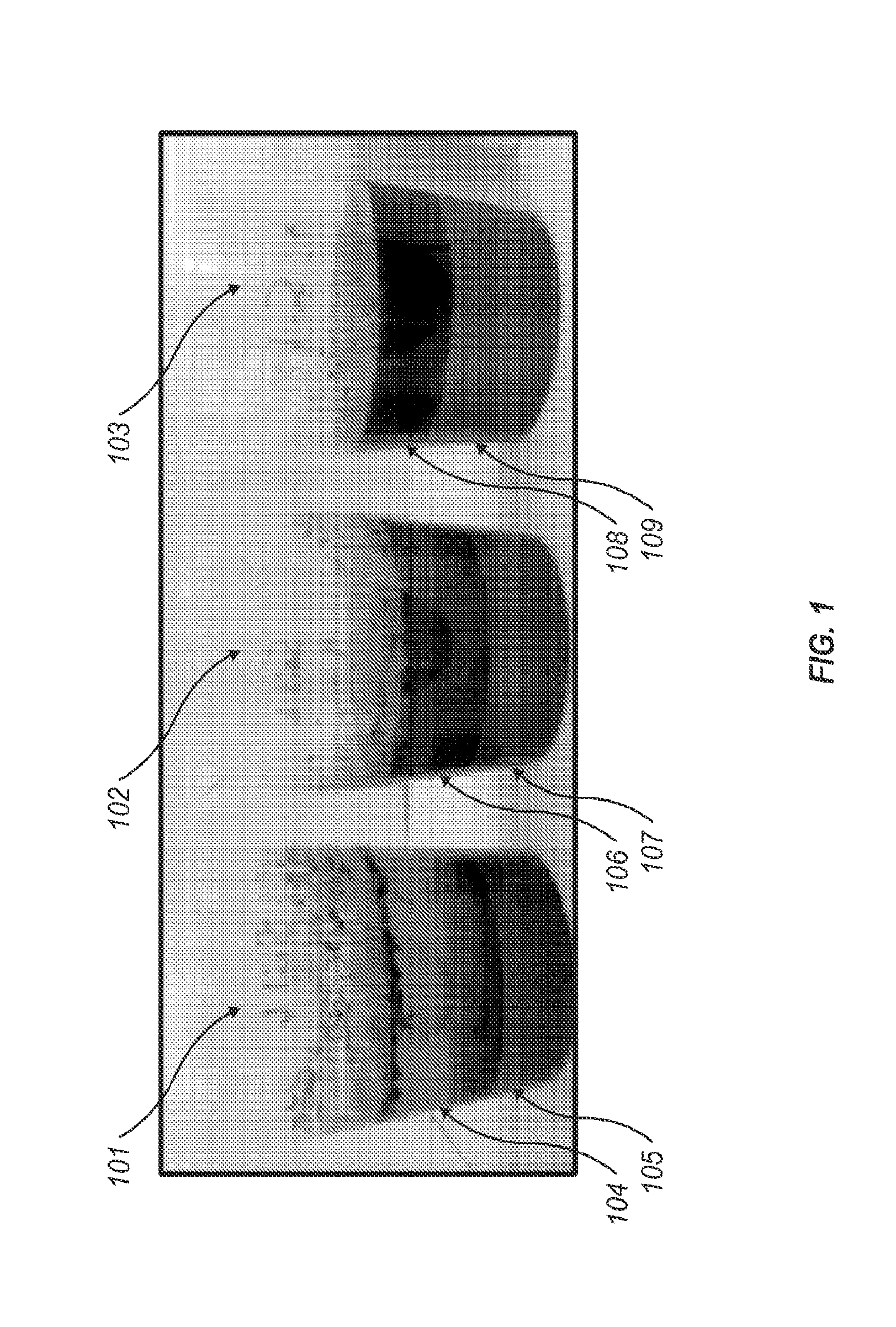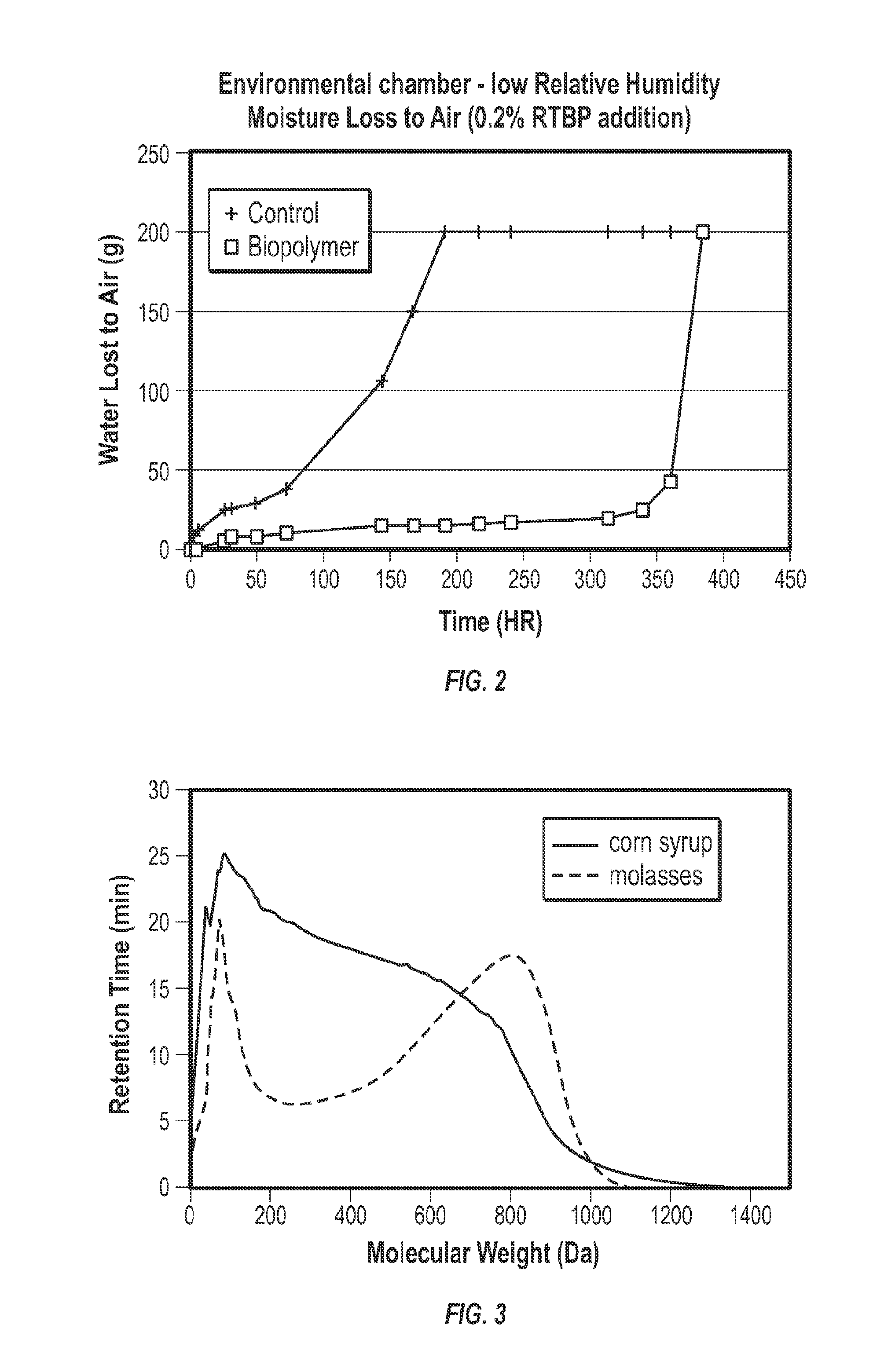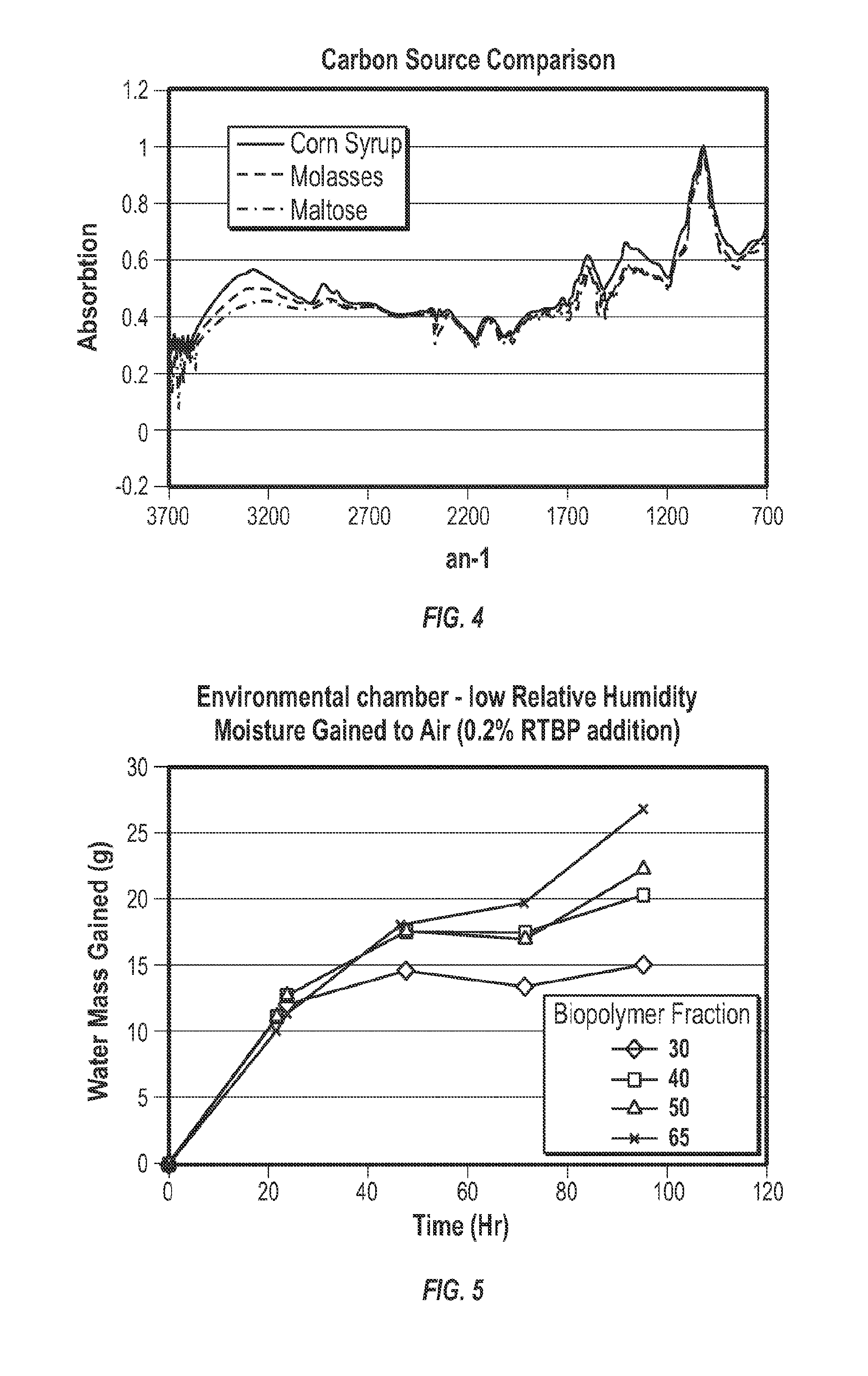Rhizobium tropici produced biopolymer salt
a biopolymer salt and rhizobium tropici technology, applied in the field of rhizobium tropici producing biopolymer salts, can solve the problems of increasing assessment and mitigation efforts, consuming extensive water resources in urban areas, and one of the most costly and difficult problems to deal with, so as to increase seed germination, reduce erosion, and increase agricultural production
- Summary
- Abstract
- Description
- Claims
- Application Information
AI Technical Summary
Benefits of technology
Problems solved by technology
Method used
Image
Examples
examples
[0148]The following examples are included to demonstrate preferred embodiments of the invention. It should be appreciated by those of skill in the art that the techniques disclosed in the examples which follow represent techniques discovered by the inventors to function well in the practice of the invention, and thus can be considered to constitute preferred modes for its practice. However, those of skill in the art should, in light of the present disclosure, appreciate that many changes can be made in the specific embodiments which are disclosed and still obtain a like or similar result without departing from the spirit or scope of the invention. The following Examples are offered by way of illustration and not by way of limitation.
experiment 1
roduction
[0149]Process modifications have been found that change the biopolymer structure and functionality. Four sugar sources have been tested as feedstock for the production of biopolymer by Rhizobium tropici: corn syrup, maltose, sorghum, and molasses. The use of varied sugar sources has been observed to produce biopolymers with varied chemical relativities and functional groups. Physical differences between the biopolymers produced from varied carbon sources included changes in color and texture. Chemical differences were investigated using Fourier transform infrared (FT-IR), and gel permeation chromatography (GPC). For the stabilization of heavy metals it is important that the biopolymer cross-links around the adsorbed metal and soil particle to reduce the mobility of the soil particle in water and the transport of the heavy metal. FIG. 3 demonstrates the properties of the biopolymer changed based on feedstock supplied to the Rhizobium tropici.
[0150]FT-IR with a total attenua...
experiment 2
[0160]A concentrated mixture of molasses-derived biopolymer dissolved in water was prepared to use as the bulk solution for the fractionation process. Ethanol was used in different amounts to separate the different fractions of biopolymer from the water. The fractionation was run at a small scale allowing the use of two gallon buckets set up on mixing plates as the reactors. The small scale design also allowed for a centrifuge to replace the slow gravity settling process to separate the solids from the solutions.
[0161]The bulk biopolymer solution was produced by first mixing 80 liters biopolymer in ethanol at a 60 percent ratio. The solids produced from this mixture settled overnight and were separated from the solution and dissolved in small amount of water at high pH (pH>12). This was mixed thoroughly to produce a concentrated solution of biopolymer water.
[0162]Three fractionation processes were conducted simultaneously using 2 liters each of the concentrated biopolymer bulk solut...
PUM
| Property | Measurement | Unit |
|---|---|---|
| temperature | aaaaa | aaaaa |
| concentration | aaaaa | aaaaa |
| temperature | aaaaa | aaaaa |
Abstract
Description
Claims
Application Information
 Login to View More
Login to View More - R&D
- Intellectual Property
- Life Sciences
- Materials
- Tech Scout
- Unparalleled Data Quality
- Higher Quality Content
- 60% Fewer Hallucinations
Browse by: Latest US Patents, China's latest patents, Technical Efficacy Thesaurus, Application Domain, Technology Topic, Popular Technical Reports.
© 2025 PatSnap. All rights reserved.Legal|Privacy policy|Modern Slavery Act Transparency Statement|Sitemap|About US| Contact US: help@patsnap.com



